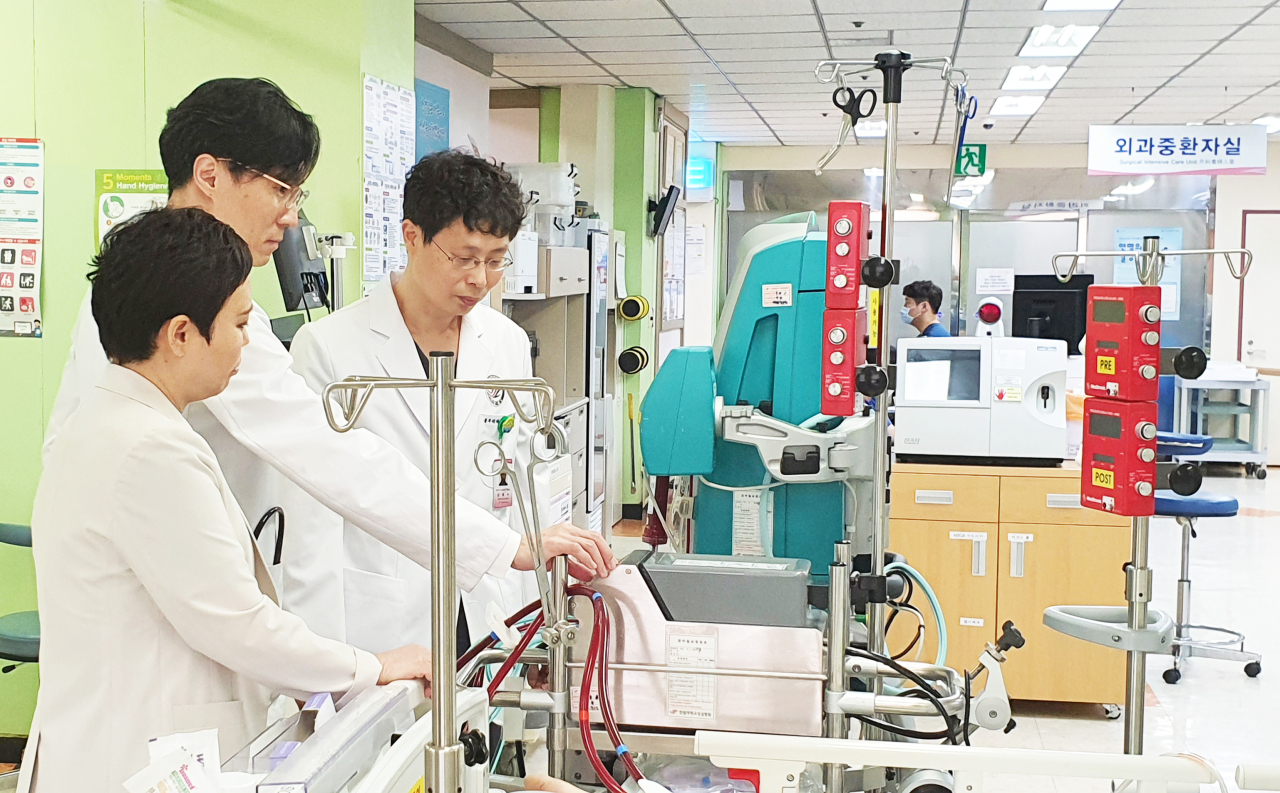 |
Photo shows team of medics who treated Korea’s first ever COVID-19 survivor to receive a double lung transplant. (Photo courtesy of Hallym University Medical Center) |
Last month, a South Korean COVID-19 survivor underwent a double-lung transplant that ended up saving her life -- a procedure that is the first of its kind in the country and only the ninth worldwide since the outbreak began. Behind her monthslong recovery and the eventual transplant are a squad of doctors and nurses who say coronavirus survival takes team effort.
When the 50-year-old woman arrived at the emergency room of the Hallym University Medical Center in Anyang, Gyeonggi Province, in late February, she was already struggling to breathe. She had to be mechanically ventilated within hours of hospitalization and then spent a record 112 days on a type of life support machine known as ECMO -- the longest any COVID-19 patient had stayed on the device.
“ECMO support generally lasts up to two to three weeks. Long-term use can increase chances of infections and other complications,” said pulmonologist Dr. Park Sung-hoon who treated the patient.
Keeping ECMO going on a patient requires round-the-clock observation by experienced personnel, according to head nurse Lee Sun-hee at the hospital’s ECMO center.
Lee, who is among the handful of ECMO specialists in the country, said a team of three nurses were constantly by the patient’s side to make sure she was comfortable and more importantly, the device was not causing complications such as bleeding.
“ECMO machines can save COVID-19 patients’ lives. And they need to be operated by trained health care workers,” she said.
Park said prior to the patient’s diagnosis with the disease, she was healthy and without comorbidities, and that such degree of severity is not that common in her age group.
“This goes to show being out of the typical range of COVID-19 at-risk group is no guarantee you won’t be severely affected,” he said.
He said before she was placed on ECMO, she was treated with steroids, anti-malarial hydroxychloroquine and HIV therapy Kaletra but to no avail. She had to remain in critical care long after the virus left her body. Her chest scans demonstrated worsening pulmonary fibrosis or lung scarring.
“About seven weeks into treatment, we decided a lung transplant may be necessary to save her,” he said.
Heart surgeon Dr. Kim Hyoung-soo who led the surgery said her lungs had suffered irreversible damage, and that she would not have survived without the transplant.
He added that it would still take a couple of months until her chest muscles regain strength to enable her to breathe without assistance.
“In the intensive care unit, each battle is fought in teams of dedicated care givers and experts and this kind of concentrated effort is imperative in helping patients overcome COVID-19. This is not feasible when hospitals are overburdened,” he said.
By Kim Arin (
arin@heraldcorp.com)








![[Today’s K-pop] Blackpink’s Jennie, Lisa invited to Coachella as solo acts](http://res.heraldm.com/phpwas/restmb_idxmake.php?idx=644&simg=/content/image/2024/11/21/20241121050099_0.jpg)